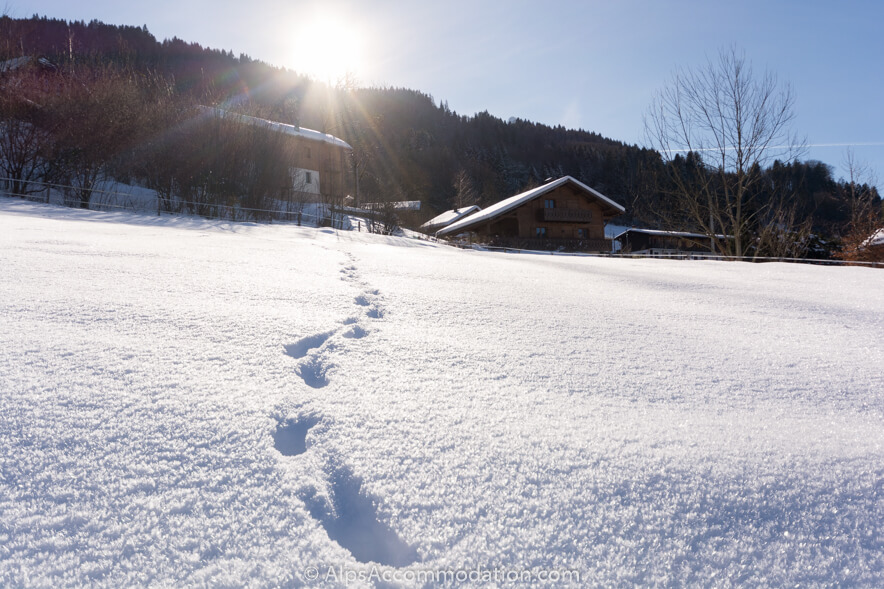
It’s been a perfect, powdery start to the school holidays here in Samoëns and the Grand Massif. Wherever you look there’s that magical shimmer of crystal white snow, right down to the valley floor. And with cold overnight temperatures the snow cover is here to stay! Conditions for skiing and snowboarding are superb but cast a keen eye around you and you’ll discover there’s a whole range of creatures making fresh tracks this winter in the Grand Massif.
Foxes and deer, wild boar and badgers, snowshoe hares, chamois, ibex, black grouse, ravens – even wolves! It really is fascinating just how many animals call the Giffre Valley and the Grand Massif home. Trying to identify them from their tracks in the snow is even more fascinating, not to mention great fun for all the family. Whether you’re taking a stroll through a snowy forest near Samoëns, cross-country skiing around Lac Bleu, or gliding down the pistes - signs of resident wildlife are all around you. You might even spot some from the chair-lift or while you’re waiting in the queue!
Chamois are sometimes sighted from the Sairon chair-lift in Morillon, or the Lindars Nord chair-lift in Flaine, where they often traverse the snowy face of the Tête du Colonney. Keep your eyes peeled for signs of the snowshoe hare when you next catch the Chariande Express in Samoëns or when touring in the beautiful backcountry of Sixt-Fer-à-Cheval. Snowshoe hare tracks are probably the most identifiable of all! They resemble an inverted triangle or capital letter Y – a unique shape formed by the hare placing its small front feet on the ground first, then swinging its large back feet forward to complete the stride. The distance between tracks then tells you how fast your furry friend was travelling – the wider the gap the bigger and faster the leap!
While tracks left by the snowshoe hare are easy to spot, identifying those of others mountain animals can be tricky. Unless of course you’ve been given some top tips by your resident snow-shoeing guide! Alps Accommodation was lucky enough to spend some time recently with Arno De Jong from Snowshoe Samoëns, who says there are some key questions to ask yourself when out tracking animals.
The environment, i.e. the plant life and thus available food and shelter, dictates the types of animals present. For example, the spruce forests here are a squirrel’s dream because when other food becomes sparse in winter, there’s always spruce buds to feed on. In fact, if you think you’ve found squirrel tracks, check to see if there’s a pile of branch tips on the ground. Squirrels do like to leave an organised mess!
Arno explains that there are 5 different vegetation levels in mountainous regions, each environment with its own unique species. We have all 5 levels here in the Giffre Valley but the Montagnard and then Subalpine levels are the most interesting for wildlife. This is because they provide the most trees and other plant life, and therefore a variety of food, which in turn means more animals! Lucky for you most of your snowy adventures here in the Grand Massif take place at Montagnard and Subalpine altitudes.
It makes sense then that the environment is the first thing to think about, but what else do you need to consider when identifying animal tracks?
Arno tells us that there are three broad categories of animal prints – hand, hoof and paw. Once you’ve worked out which category the tracks belong to, you can start narrowing down your options. Hand prints are easy because, well, they look like hands! Here in the Grand Massif the most likely animals to leave such a print – aside from you and me of course – are squirrels and hedgehogs, with their small palms and longer claws. Paw prints are easy to identify too, and will likely belong to cats, dogs, foxes, hares, or if you’re lucky a lynx or wolf!
The lynx and wolf are extremely rare and as you now know, the snowshoe hare is very easy to identify. So, when it comes to paw prints, often it will either be a cat, a dog, or a fox. Fox paws are a similar shape to a dog’s, only narrower and not as round. This is because a fox’s toes are closer together than those of a dog. A fox will also travel in a straight line, while dogs tends to be a little more erratic in their wanderings.
As for hoof prints, these will be smooth, oval-like shapes. Hooved animals, such as deer, chamois and wild boar are also heavier than other animals, so their tracks in the snow will be deeper. The shape, depth, width and length of a single print, as well as the size of each step are all important factors to consider. For example, the long-legged stag may have a stride of 1.5m, which is much longer than the stride of a stumpy-legged boar. The hoof print left by a wild boar will also be broader than a deer or chamois and slightly more splayed in the toe.
Hint: They're not all animals! Hover over the images to reveal the answers (or tap and hold on a mobile device).
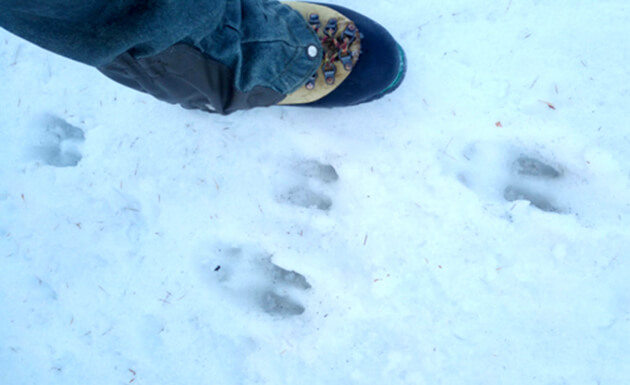

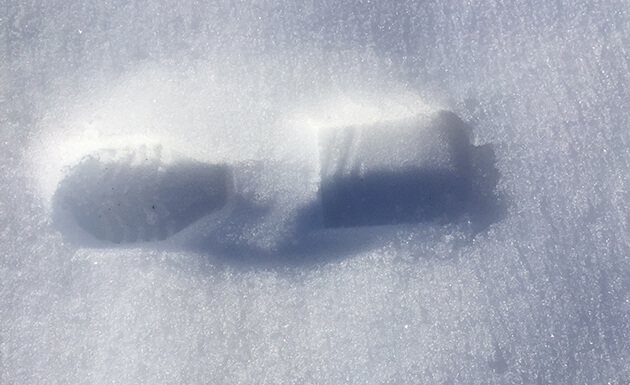

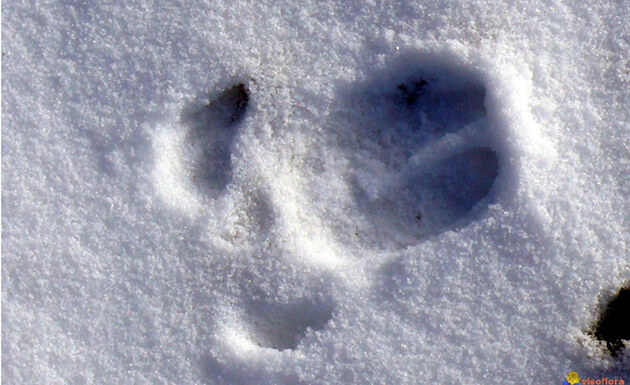
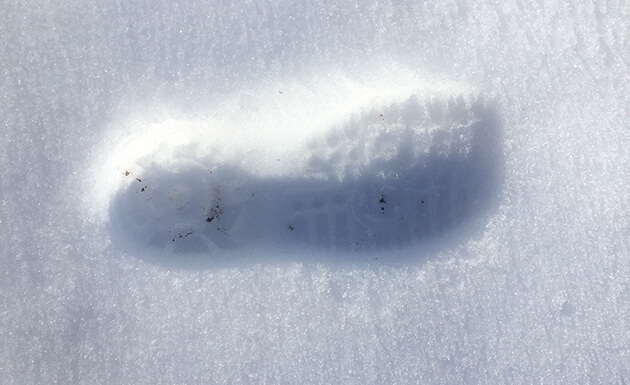
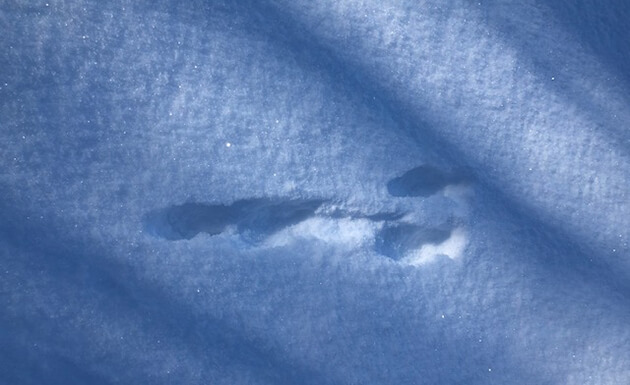
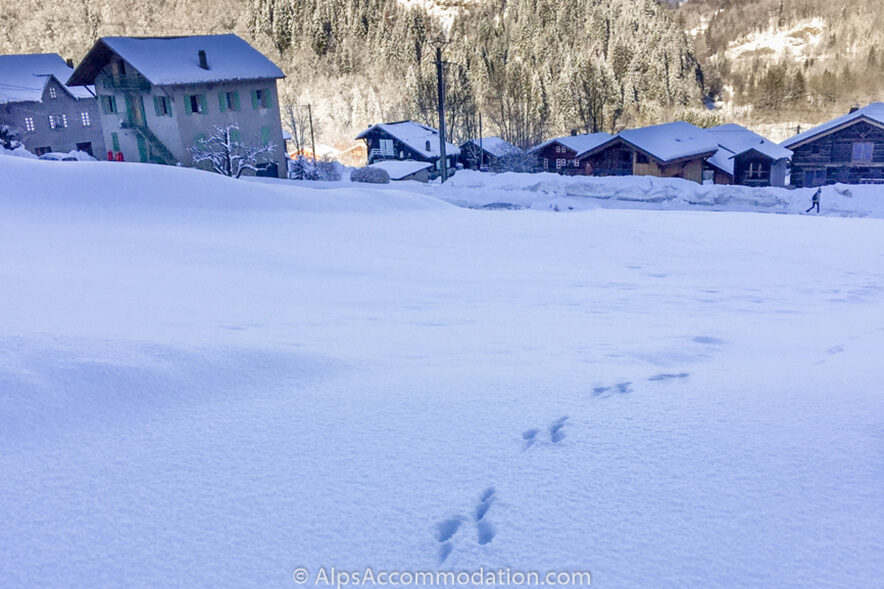
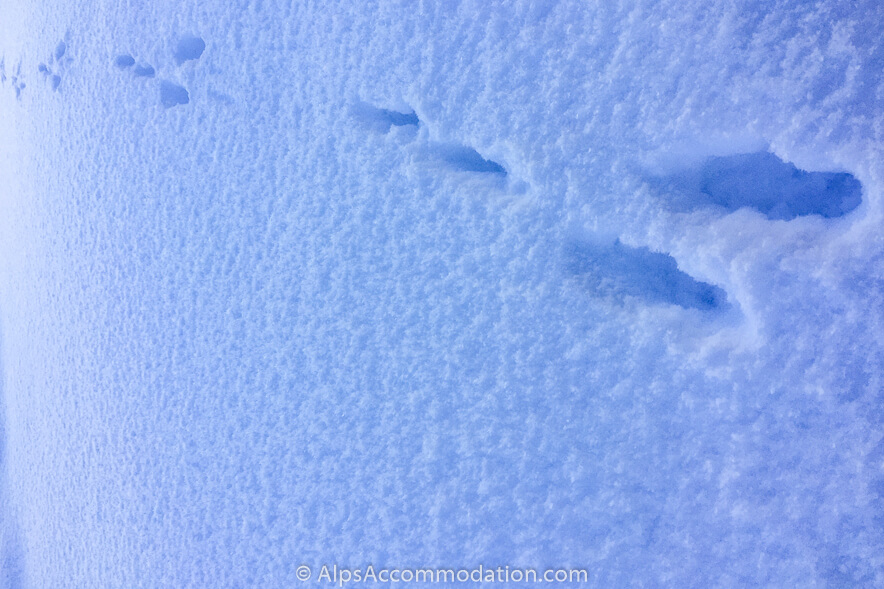
Jamie Carr, another of our favourite local snow-shoe guides, has also seen many signs of wildlife of late. He tells us there are wild boar galore in the forests near Lac Bleu, and herds of deer come every night to drink at Lac Bleu and the Giffre river, which makes for some fabulous footprint displays come morning. A guided snow-shoe hike or back-country tour is a great way to get up close and personal with nature and learn more about identifying animal tracks. It’s also just one of many fabulous additional activities to enjoy here in Samoëns and the Grand Massif during the busy holiday season. Guides Arno and Jamie, both come highly recommended, and offer a great range of tailor-made snowy adventures. Our friends at Zig-Zag and 360 Ski Schools can also help you arrange a fabulous day out tracking animals.
The Grand Massif management team also organise some great wildlife-themed activities during the holiday period. Kids will love to have a go at the animal quiz on the Septisnake in Samoëns. Or cruise down Morillon’s wooded Marvel run as a family and stop along the way to learn all about the local wildlife – there are some great interpretive signs!
Wherever you are in our wintery wonderland this season, armed with your new-found animal tracking knowledge you’ll be spotting the signs of wildlife EVERYWHERE!
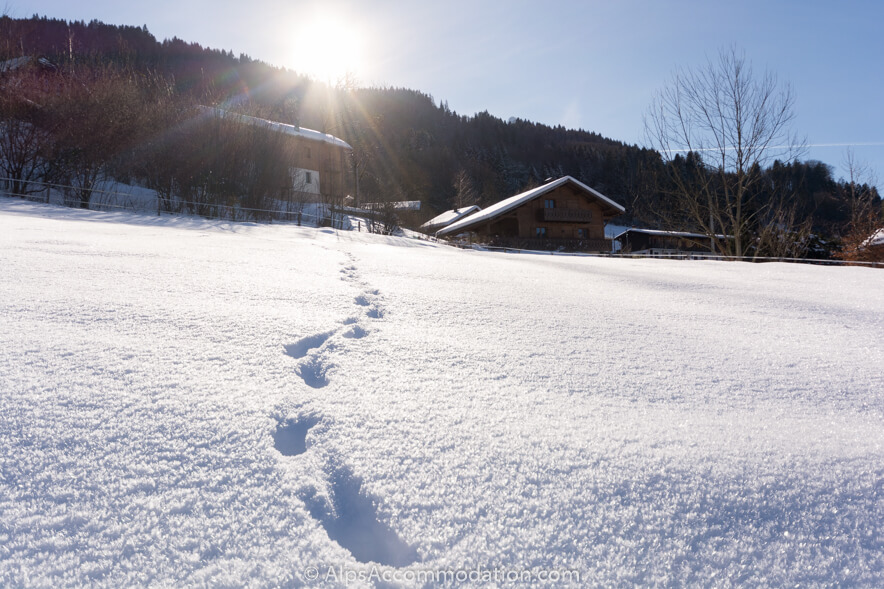
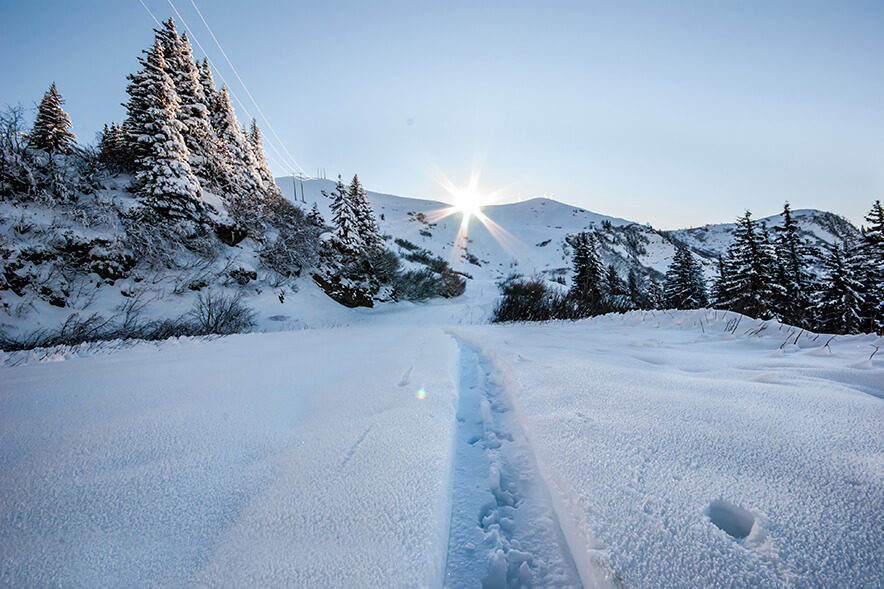
Discover the magical Christmas and New Year in Samoëns, a unique and wonderful time to visit Samoëns, Morillon, Sixt-Fer-à-Cheval and the Grand Massif.
Discover Samoëns ski resort, part of the vast Grand Massif ski area.
Our guide to après-ski in Samoëns, Morillon and the Haut-Giffre valley. The best a après-ski bars and activities.
The ski/snowboard rental shops of Samoëns - Discounted ski hire for Alps Accommdodation clients
Discover the best ski touring routes in Samoëns and the Grand Massif
Discover the numerous non-ski activities available in Samoens, Morillon and the Haut-Giffre valley.
Everything you need to know about cross-country skiing in Samoëns. Morillon and Sixt-Fer-à-Cheval
Information for families bringing children to Samoëns and the Grand Massif in Winter
Discover the Easter, April and Spring skiing period - possibly the best time to ski in the Alps!
Lift pass prices and information for the Grand Massif, including Samoëns, Morillon and Sixt-Fer-à-Cheval
Disover the best ski schools in Samoëns with discounts for Alps Accommodation guests.
Discover the excellent on-mountain restaurants of Samoëns and the Grand Massif ski area.
Download the Grand Massif piste map for Samoëns, Morillon, Les Carroz, Flaine and Sixt-Fer-à-Cheval.
Up to date snow report from Samoëns and the Grand Massif. including Morillon and Flaine.
Information for disabled skiers and disabled skiing in Samoëns and the Grand Massif ski area
Find out what's happening in Samoëns, Morillon, the Grand Massif, and the Haut-Giffre valley this winter.
Our guide to the top 6 unique things to do in Samoënsand the Grand Massif in Winter. If you're coming to Samoëns, Morillon, Sixt or the Grand Massif ski area, France, then you should not miss these activities!
Old-school weather and snow forecasting in Samoens, Morillon and the Grand Massif. Will it snow? Samoens Snow Forecast
Autumn is upon us, and plans are already being formed for the winter season! We have a huge amount of local experience at Alps Accommodation, so let us help you make the most from you winter holiday in Samoens, Morillon and the Grand Massif.
Top 10 tips for driving in the snow in Samoens, Morillon and the Grand Massif.
Samoens - other activities to do in and around Samoens while your friends are skiing